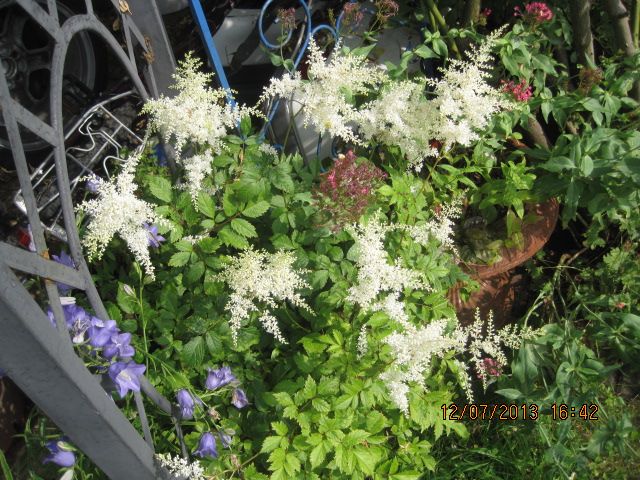In 2010 I found a colony of Warren's skipper, but all I had to show for it were a couple of individuals photographed in the plastic observation box (and released immediately, of course). Last year I went back, rather late in the season, and had just one confirmed sighting - a rather tatty individual that was miraculously dropped, torpid, at my feet by a gust of wind after the sun had gone in! I warmed him up and got some semi-natural photos in a sheltered spot. Today, finally, I found the heart of the colony and saw at least half a dozen - perhaps more - buzzing up and down a thyme-covered stretch of hillside.
I didn't find the spot until about 11h30, by which time they were already quite warm and active, but what made it particularly difficult (again!) was the absurd slope.

(It's the same for several hundred metres up and down)
When I found the first
warrenensis, I took off my backpack in preparation for a photo ... and then couldn't put it down. Wherever I put it, in whatever position, it just set off down the slope. So I missed that one. Then another came by and I caught a simple proof shot with my backpack on, almost falling down the slope myself. Finally, I found a place the backpack would stay and waited for the next to come. Over the course of an hour there was a constant stream of warrenensis, though many were obviously the same ones going up and down the slope. In general it was almost impossible to position myself for a good photo without falling down the slope (actually, very annoying!) but I did get a few record shots - better, at least, than those of previous years because they are completely natural. This is probably the best of them:

Here is another:

Next year I'll go straight to this spot while the day is cooler and with a little luck finally get decent pictures!
There were also carline skippers on the slopes and a few alpine grizzled skippers, looking rather worn.

(carline)

(alpine grizzled)
I lef the site at 12h45 because the skippers were all far too active by then, rain was forecast (and I had a 25 km cycle ride ahead of me) and I wanted to call in on the way home for southern white admirals, which I hadn't seen yet this year.
Two southern white admirals were in mortal combat at this second site. Here is one ...

(that's my bike by the tree)
... and here is the other, photographed by holding the camera over him and clicking the shutter, without being able to see what I was photographing!

Distressingly, at three places along the river where the admirals were flying, something very toxic had been dumped, killing all trees and vegetation on its way down to the river.

I wasn't especially trying for a high count, but when I totted up on the train I reckoned I had seen 58 species today. These are the ones I confirmed and formally identified:
Large skipper, small skipper, Lulworth skipper, silver-spotted skipper, carline skipper, alpine grizzled skipper, Warren's skipper, red-underwing skipper, dingy skipper, marbled skipper, scarce swallowtail, Apollo, small white, southern small white, mountain green-veined white, green-veined white, wood white, Bath white, black-veined white, mountain clouded yellow, purple-edged copper, purple-shot copper, large blue, little blue, holly blue, common blue, Eros blue, Chapman's blue, Escher's blue, silver-studded blue, idas blue, mazarine blue, Provençal short-tailed blue, turquoise blue, Adonis blue, chalkhill blue, alpine argus, northern brown argus, shepherd's fritillary, heath fritillary, Grisons' fritillary, Queen of Spain fritillary, dark green fritillary, knapweed fritillary, marbled fritillary, small tortoiseshell, comma, southern white admiral, large wall, marbled white, grayling, great sooty satyr, alpine heath, almond-eyed ringlet, lesser mountain ringlet, small mountain ringlet, Swiss brassy ringlet, dusky meadow brown.
So a few more piccies from the day:

(a road-stunned stag beetle)

(higher slopes - where I didn't find
warrenensis)

(the Matterhorn)

(a pair of friendly silver-studded blues)

(a pair of very friendly silver-studded blues)

(a very fresh Escher's blue)

(green-veined whites)

(female Grisons' fritillary)

(marbled fritillary)

(grayling)

(marbled skipper)
Guy





































































